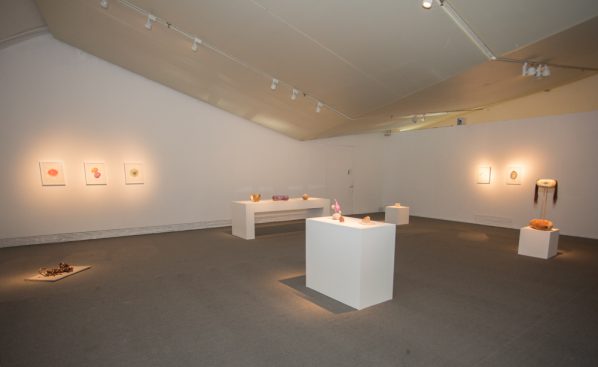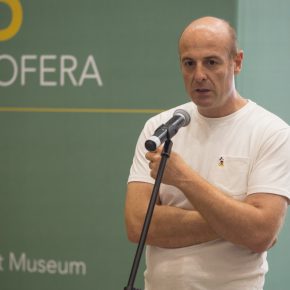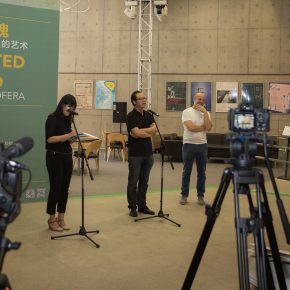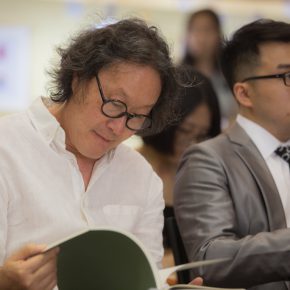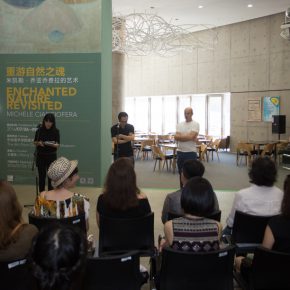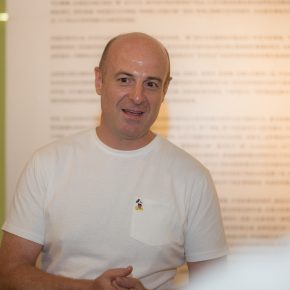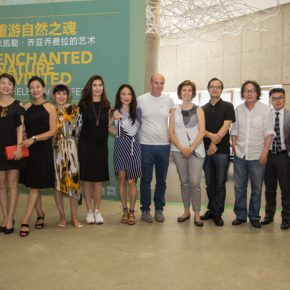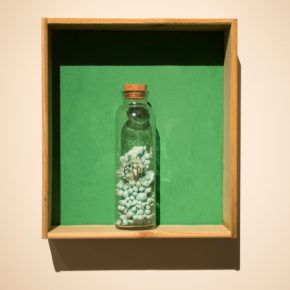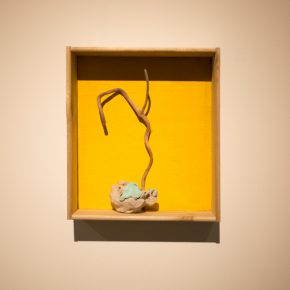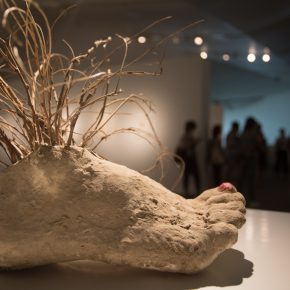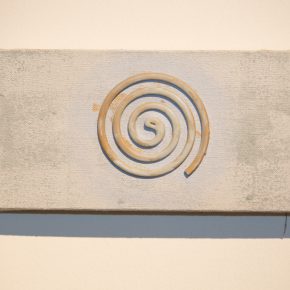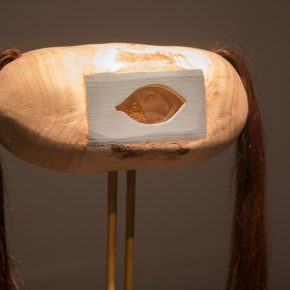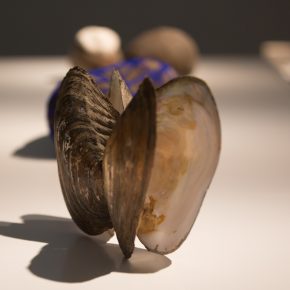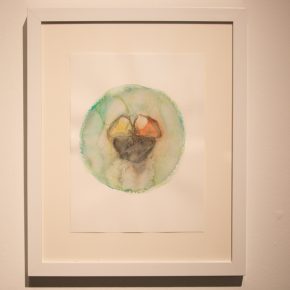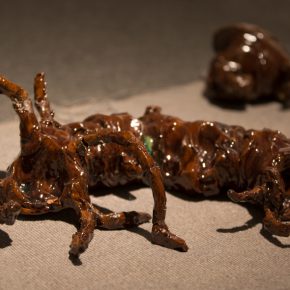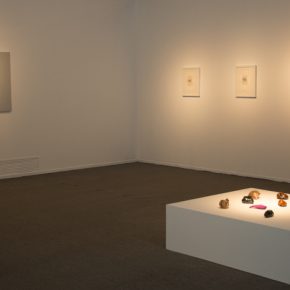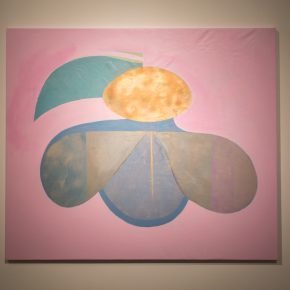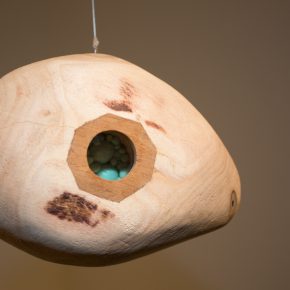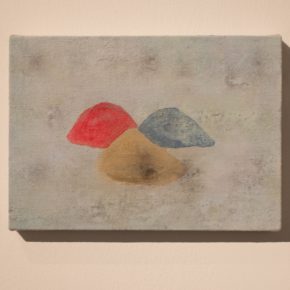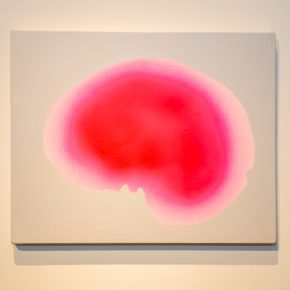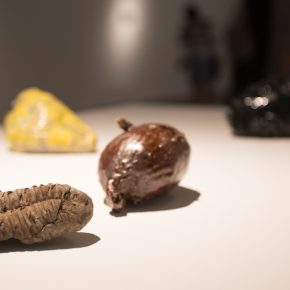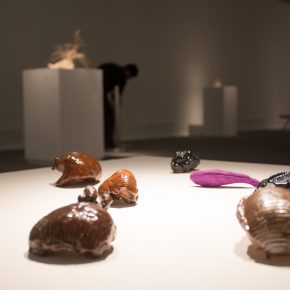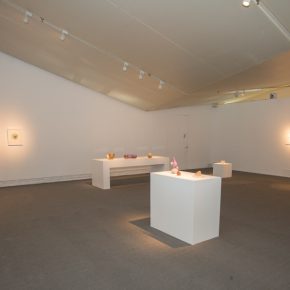July 26, 2016, Italian artist Michele Ciacciofera who lives and works in France brought his solo exhibition to the Art Museum of the Central Academy of Fine Arts, the exhibition is the artist’s first solo exhibition in China, with Prof. Wang Chunchen, head of the Department of Curatorial Research of the Art Museum at China’s Central Academy of Fine Arts( Abbr. CAFAM) serving as the curator.
Michaele Ciacciofera was born in Nuoro, Sardinia, Italy, and he studied at Palermo, the capital of Sicily. In his view, his family came from two areas: his father is a Sicilian, while his mother is a Sardinian, he expressed that, "the cultures of these two islands are completely different, I have been subject to the influences from two completely different regions in the same country.”
Moreover, Michaele came into contact with art from the age of four as he was born in an aristocratic family of culture: the renowned writer Grazia Deledda who won the Nobel Prize in 1926 was his distantly related grandmother; and his great-uncle Salvatore Combosu is also a famous writer. "My educational background is political science, mainly sociology and anthropology. Since I was eighteen or nineteen years old, I have felt that I have a strong link with writers and anthropologists, this sense of connection is much stronger than other artists in my field,” Michaele said.
It was between this teaching background and cultural heritage, that the volumes of the artist Michaele Ciacciofera’s works lie, they are often small, seemingly ordinary and simple, yet filled with a sense of life, “The work created by Mikkeller Ciacciofera is a study on the world's natural poetics, full of connotations and they are meaningful,” the curator Wang Chunchen commented.
The artist’s creations constantly cover a variety of mediums, from installation, sculpture, to painting, drawing on paper, for this exhibition, he has specially created a sound / video installation. The exhibition includes large paintings, manuscripts, hand-carved items, ceramics, as well as sculpture assembled by mud, cement and mixed components found randomly. A part of these materials come from different places the artist has lived and worked, and some have come from the artist’s collection of so-called ready-made items.
These installations are the creations that the artist took as a visual system to explore the book The Interpretation of Nature and the Psyche jointly published by the Austria doctor, Nobel Laureate Wolfgang Pauli and the Swiss psychiatrist Carl Gustav Jung in 1952 with reflections of Pauli on Kepler's Mysterium Cosmographicum. In this way, the artists hopes that he could reconnect with Italian intellectual Antonio Gramsci’s theory he proposed on the "indifference" in the early twentieth century, through the selection of the works on display, he tries to inspire a repetitive dialogue with the audience, to share with the audience an emotional journey, jointly thinking of the space of our society full of art which has played a catalytic role. So it is not a simple exhibit we are discussing, but a rethinking of shared "revisiting" and structural features.
The connotation of politics and anthropology brought by these concepts, are featured in the artist’s choice of materials, these materials include cardboard, foam, clay, mud, and other materials from nature or are recycled. These materials are further expressed in the form of aesthetic ideas from figurative to abstract, from abstract to figurative, it’s an aesthetic thinking without any clear boundaries.
The exhibition title “Enchanted Nature, Revisited” was inspired by the artist's sketchbooks, he recorded his thoughts in it, including his relationship with the world, and his re-imagining of nature and the environment. For the natural world, the artist always conveys a sense of uncertainty and vulnerability, but also his deep love. He also stressed the important role of memory in his life and research.
"What happens when we do not have eyes to see art?" Curator Wang Chunchen said, "because we believe in the behavior of ‘seeing’, many things were started that easily draw conclusions and judgments were issued on the world through quick glances, especially in the world of arts, “seeing” is often viewed as the first principle, for eyes are the essence of art. Hence, the effect of the mind is greatly reduced and weakened. "in Wang Chunchen's opinion, Michele Ciacciofera is an explorer who use subjects to think about the ultimate problem, who does not conduct a visual beautification, “what he brought us, is instead of seeing, reading with the mind.”
It is worth mentioning that the work for this exhibition by the artist was created in the studio of the Central Academy of Fine Arts in 25 days, “in these 25 days I worked 20 hours a day, and I hope to bring a direct and practical experience towards China in my creations, presented to the Chinese audience for best results,” Michaele said.
It is reported that the exhibition will remain on view till September 11.
Text by Lin Jiabin and photo by Hu Sichen/CAFA ART INFO
Translated and edited by Sue/CAFA ART INFO


